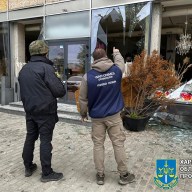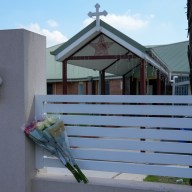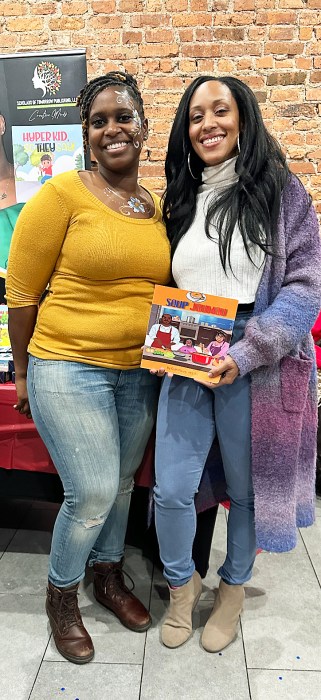EDMONTON – A man who once mockingly referred to himself as the “Robert Pickton of Alberta” will learn his fate June 3.
Accused prostitute killer Thomas Svekla was so taken by his own celebro-notoriety that he helped weave the threads of evidence that will be considered in the case against him.
Svekla is charged with second-degree murder in the deaths of Rachel Quinney and Theresa Innes. The 40-year-old mechanic is also accused of committing indignities to their bodies.
In his closing arguments Friday, defence lawyer Robert Shaigec said the Crown’s case is nothing more than a rickety scaffolding of weak facts, hearsay, coincidence and testimony from accusers whose memories have faded with time or been addled by crack cocaine.
“There may be no homicide in this case, plain and simple,” Shaigec told Court of Queen’s Bench Justice Sterling Sanderman in a reference to Quinney’s death.
Svekla, flanked by prison guards, sat nearby in the prisoner’s dock, his paunchy frame clad in a light-grey golf shirt, his balding hair shaved to the skull. He wore wire-rim glasses, moustache and goatee.
Pointing to testimony during the trial from a medical examiner, Shaigec reminded Sanderman that Quinney had so much cocaine in her system she may have died of an overdose.
Crown prosecutor Ashley Finlayson has conceded that the case is circumstantial.
But in his closing address, he said Svekla’s behaviour, his penchant for lying and the outrageous odds of one man with a predilection for violence finding bodies of two murdered women in two years is enough to carry a conviction.
“The lies continue to flow, so you should have no difficulty rejecting his explanation,” Finlayson told Sanderman, who is hearing the case without a jury.
The stakes may be higher than the case itself.
Svekla is the first person charged by Project Kare, a squad of police officers investigating dozens of missing sex-trade workers and others living high-risk lifestyles.
Court heard police tell Svekla during a taped interview that they were looking at him in six other deaths of Edmonton prostitutes and in the disappearance of two more.
“Charge me with all of them,” he fired back on the tape. “Let’s go with 14, ’cause I’m looking at $1 million each,” he said, in an apparent reference to plans he had voiced to others about a wrongful prosecution lawsuit.
Quinney’s case, as outlined in court, began June 11, 2004, when Svekla went out with a friend to smoke crack and instead made a grisly find in a lonely stand of trees in a farmer’s field northeast of Edmonton.
Quinney’s body was face up and splayed out, breasts and genitals removed. Maggots burrowed into her flesh, the normal course of nature doubling as the final indignity to a short and brutish life.
The 19-year-old mother of two was born in Frog Lake in eastern Alberta. She worked north of downtown Edmonton on a strip with pawn shops, payday loan outfits, taverns, windows with bars and concrete recesses stained black with urine.
Police questioned Svekla, made him take a polygraph and got a DNA test, but came up empty and let him go.
Court heard he eventually moved to High Level, 700 kilometres to the north, where he worked at a Fountain Tire store and faded into the background – until lightning struck twice two years later with Theresa Innes.
Like Quinney, the 36-year-old had two children and had tried and failed to break a cycle of crack use and prostitution.
In Edmonton, she worked in Little Italy – an area of brightly painted red, white and green shops and restaurants north of downtown. She then moved to High Level to ply her trade in bars.
It was there, say acquaintances, she befriended and smoked crack with Svekla.
In March 2006, her mother reported her missing. On May 7, the remains of Innes were found at Svekla’s sister’s house in Fort Saskatchewan just outside Edmonton. Innes’s nude body was wrapped in garbage bags, a shower curtain and an air mattress, tightly wound with wire, and tucked into a black hockey bag that he had brought with him from High Level.
He told everyone the bag was full of compost worms and no one was to touch or open it. But his sister, Donna Parkinson, was suspicious and while he was out she snapped on a pair of gloves, opened the bag and called police.
The next morning, officers surrounded Svekla’s car as he was leaving to run errands. They charged him with murdering Innes. Eight months later, he was also charged in Quinney’s death.
When his trial began Feb. 19, the Crown knew it was thin gruel. There were no DNA matches, no confessions, no murder weapon, no eyewitnesses and no obvious cause of death, though the medical examiner couldn’t rule out soft smothering.
Sanderman had to wade through a welter of interview and wiretaps transcripts, direct and hearsay testimony and similar-fact evidence. He accepted some, but not all the evidence as he tried to create a fair picture of a man who was at turns egomaniacal, sorrowful, violent and bullying.
Raised in Fort Saskatchewan, the youngest child of seven, Svekla became a mechanic, got married, had a child and was divorced.
Other women testified he’d threaten to strangle them or force sex on them. He choked himself and others while on drugs, noted Sanderman, in a quest for “an ultimate high.”
Svekla said he loved women, while other times he called them sluts and whores. Innes was “a bitch in the bag.”
He pleaded guilty to leaving threatening phone messages, was once charged with a sex assault and had thrown wrenches at a co-worker.
But what he loved most, it seemed, was the spotlight.
Testimony indicated that a week before Quinney’s body was found Svekla showed up at Parkinson’s house in a panic, his arm covered in scratches. He said he had done something awful and feared that “people will hate me.”
The self-proclaimed “big blabbermouth” would go on to recount his discovery of Quinney to anyone who would listen: his former landlord, a friend’s father, drug buddies, family members, other inmates.
There were multiple versions: he found the body while going to the bathroom, while looking for a tractor, while chasing a prostitute.
An early court appearance became a movie premiere – Svekla smiling for the cameras, eyes hidden by dark round glasses, cuffed hands raised in a wave.
He said he felt like a “celebrity.” In lockup, he was put in a special section with other high-profile accused. Lawyers, he crowed, were lined up to defend him.
He spitballed with a friend about book and movie deals headlined with Hitchcockian titles such as “The Man They Thought They Had” or “He’s Not Lecter” – an homage to celebrated fictive psycho flesh-eater Hannibal Lecter in “Silence of the Lambs.”
He spoke of “Psycho,” the movie in which victim Marion Crane, like Innes, has her nude body wrapped in a shower curtain prior to disposal.
He called himself “The Bogeyman” and “the Robert Pickton of Alberta,” referring to the British Columbia man convicted last year of killing six women.
He dropped teasing hints to friends and inmates – he’d killed a hooker and would kill again; it was dead easy to kill. A friend suggested he was the killer. “What would you do if I was?” he replied.
He talked. And he talked, delivering different versions of his alibi that prosecutors then subpoenaed.
Svekla told others that someone else put Innes’s body in his broken-down truck. It was a setup. Nevertheless, he took the body with him to give him time to think. He couldn’t tell police because they would never believe him.
Sanderman didn’t hear from Svekla or hear any other defence evidence. Shaigec didn’t call any.
But on June 3, Sanderman will render judgment.
On that day, everything is on the line and everyone will be watching.
Thomas Svekla wouldn’t have it any other way.
















